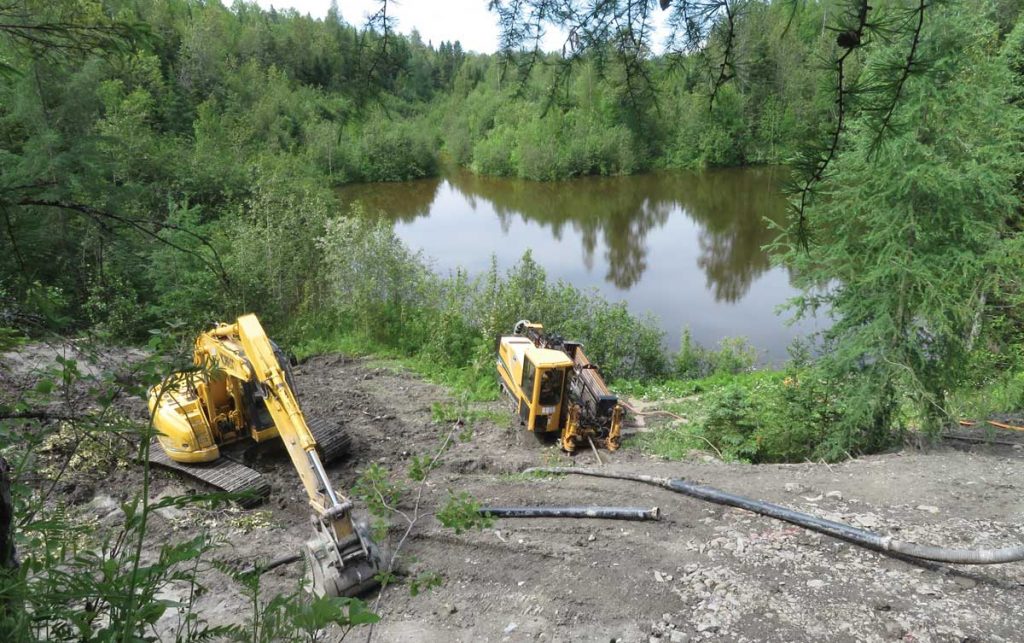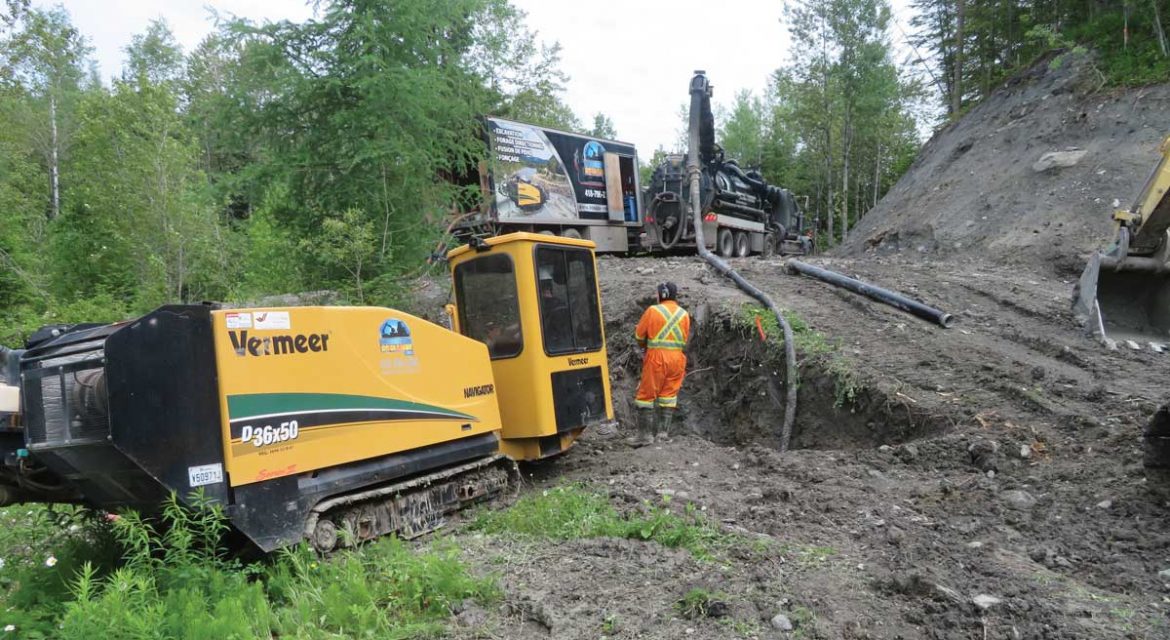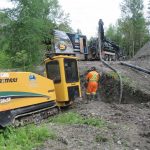When it comes to horizontal directional drilling (HDD), typical projects focus on sewer, water, fibre, oil, gas and electric installations. However, a recent project in Quebec highlights the use of this technique outside of those parameters.
Beauce Gold Fields recently announced that it has completed a pilot project using HDD to drill lengths of the auriferous till units of the paleoplacer channel on the Beauce Gold property located in St-Simon les Mine, Quebec.
Horizontal directional drilling has the potential to revolutionize placer gold exploration,” said Patrick Levasseur, president, and CEO of Beauce Gold Fields. “If successful, this innovative technique will not only enhance cost-efficiency but also significantly improve sample coverage and reduce environmental impact, marking a significant leap forward in our exploration efforts.”
Beauce Gold Fields focuses on exploring and developing the largest placer gold district in eastern North America. The company’s objective is to trace old placer gold workings back to a bedrock source to uncover economic lode gold deposits. The company’s flagship property is the St-Simon-les-Mines Gold project site of Canada’s first gold rush that pre-dates the Yukon Klondike.
We used HDD for placer gold exploration – not to be confused with hard rock/bedrock gold exploration. Placer gold deposits tend to be horizontal layers, like a buried alluvial plane for example. Our target zone (pay zone) is on average a 2- to 5-m thick layer composed of auriferous basal till and saprolite that sits over bedrock. The basal till and saprolite is covered by 10 to 40 m of thick glacial till overburden,” Levasseur says. “The standard method to explore this type of deposit is with the use of overburden drilling, such as reverse circulation or sonic drilling. This [method] provides a few metres of vertical core samples of the pay zone and many more metres of sterile overburden. Inversely, HDD allows us to sample many more metres of pay zone lengths while reducing sections of sterile overburden. We get to sample/explore many more meters of pay zone at a lower cost per drill hole.”
As is the case in the gold exploration business, the work is contracted out. In this case, Beauce Gold Fields hired Forage Dirigé Coulombe, a directional drilling contractor in Lotbinière, Quebec, to tackle the exploration.
To complete this project, the contractor used its Vermeer Navigator D36X50 directional drill and a vacuum excavator, with the latter collecting the bentonite mud and drill cuttings. As the drilling progressed, the bentonite-based mud carried the cuttings (rock fragments, auriferous till and saprolite) back to the surface. All the slurry was sucked into the vacuum excavator and transferred to a geotech-lined pit for decanting.
From one location, four fanned-out 6-in. boreholes were completed, totaling 321 m in the auriferous till (Basal Till) and saprolite layers. The next step, Levasseur says, is to conduct a series of trials to select the best method to separate the bentonite slurry to create heavy mineral concentrates that can be analyzed for gold. If the company settles upon a successful separation method, a mobile placer plant will be mobilized onsite to process the material.
“It was a pilot project. HDD is cost effective vs. typical overburden drilling. Very effective in boring through the gold bearing units. The recuperation of cuttings and bentonite provided good volumes of material to test for gold,” Levasseur says.
He adds that as this is a pilot project and still early on, there are some questions that need to be answered to truly realize the potential for gold exploration via HDD. “Can we make heavy mineral concentrates from the cuttings and bentonite? Can we, through gravity separation methods, recuperate the gold? We also have to determine if the drill head’s churning and spinning pushed gold particles into the bentonite that lined the borehole walls known as ‘drag ore’ effect,” he says.

Advantages of HDD for Gold Exploration
While still in the early phase of the pilot project, Levasseur sees five advantages to using HDD for gold exploration.
- Enhanced Exploration: HDD allows for targeted exploration of specific areas of interest within the paleoplacer channel. By drilling at angles or curves, geologists can access hard-to-reach or hidden gold-bearing zones that traditional vertical drilling might miss.
- Increased Coverage: Directional drilling enables extensive coverage of the paleoplacer channel with fewer drill holes. This efficiency can significantly reduce drilling costs.
- Improved Sampling: HDD allows for better sampling along the length of the paleoplacer channel. This means more representative samples of the gold-bearing formation can be collected, leading to more accurate estimations of the gold resource.
- Minimized Environmental Impact: By using directional drilling, the surface disturbance on the Beauce gold property can be minimized, reducing the project’s overall footprint and potential environmental impacts.
Resource Estimation: The data collected from directional horizontal drilling can be used to estimate the size, shape, and continuity of the gold deposit within the paleoplacer channel more precisely. This information is critical for determining the economic viability of the deposit and planning future mining operations.





